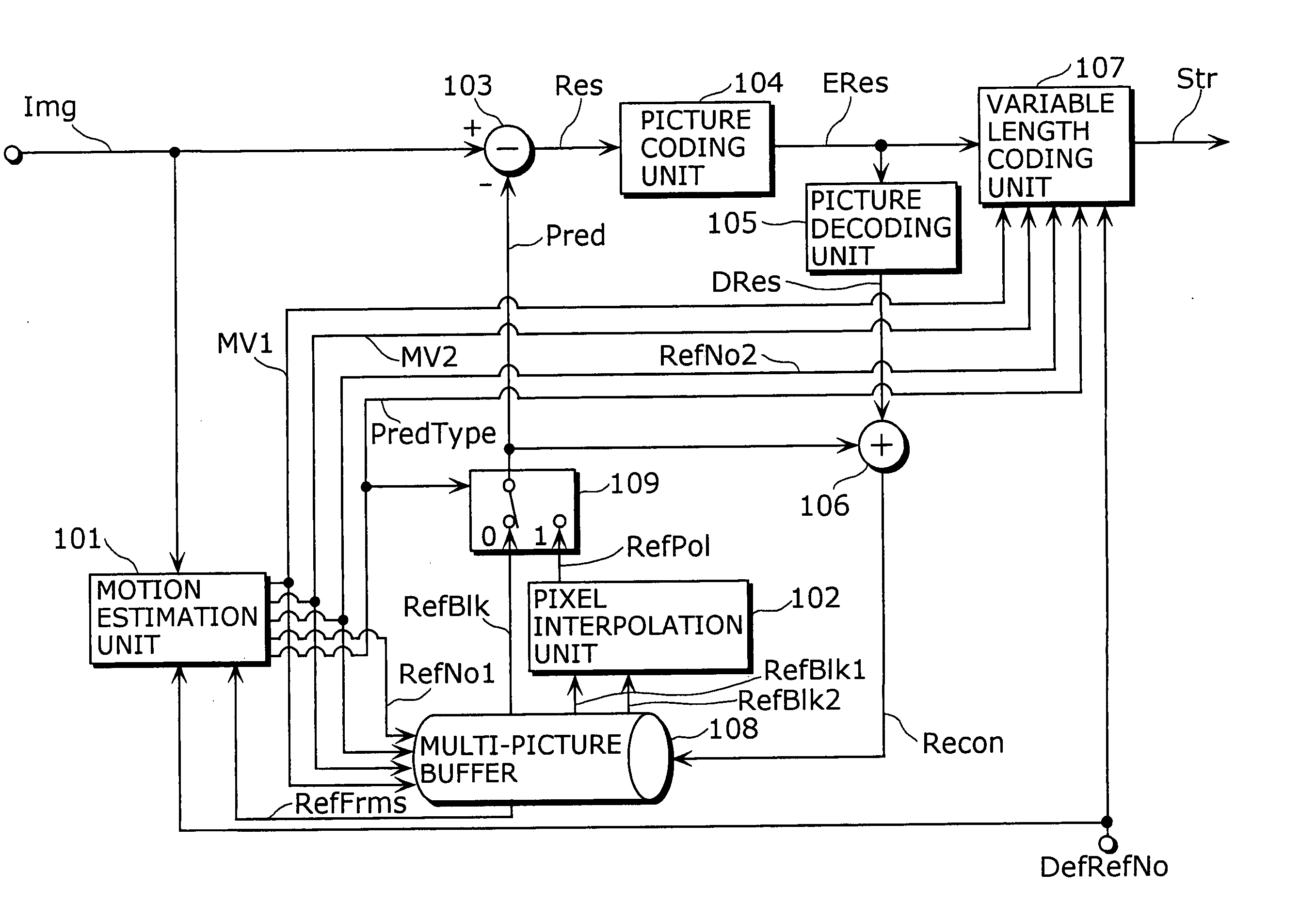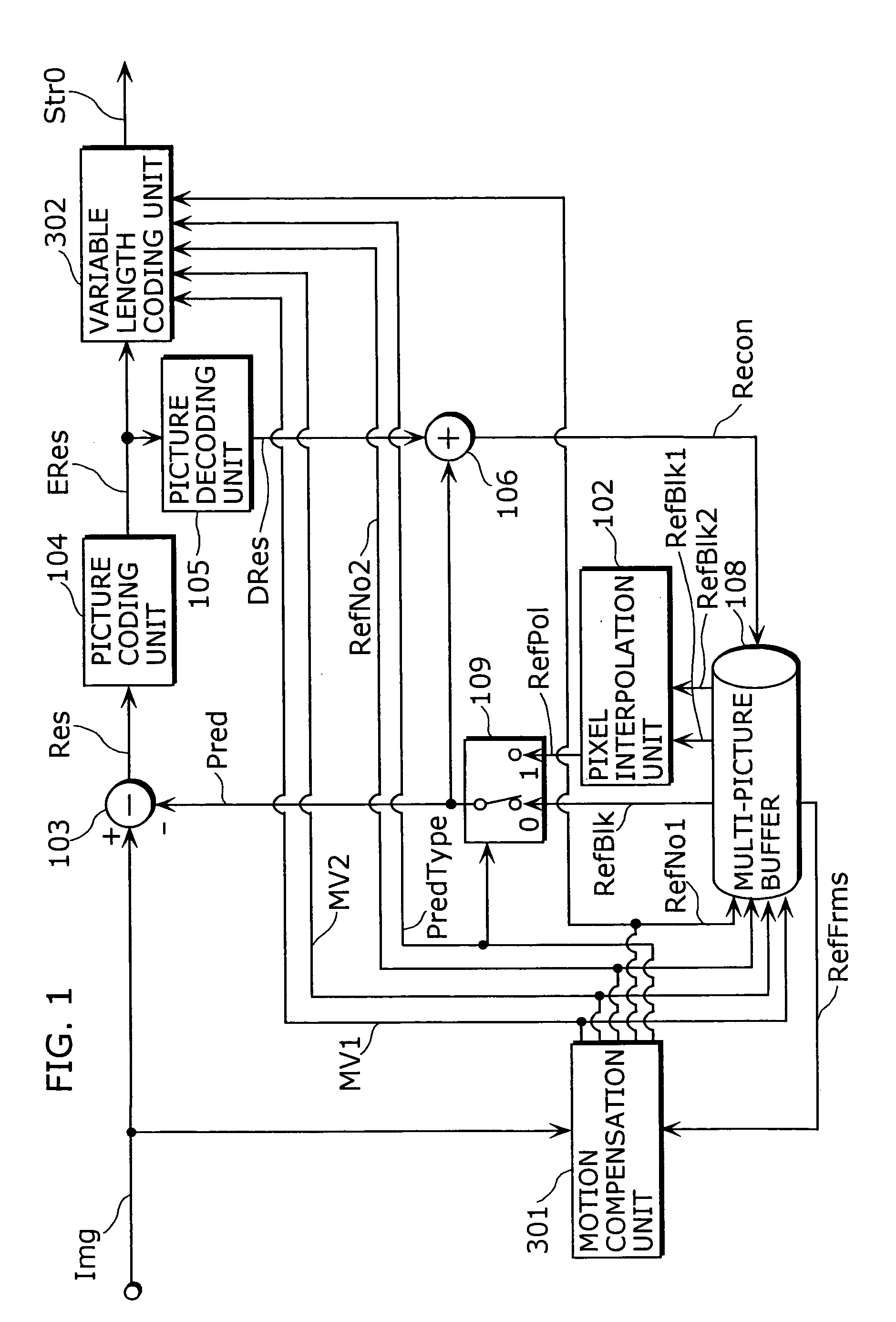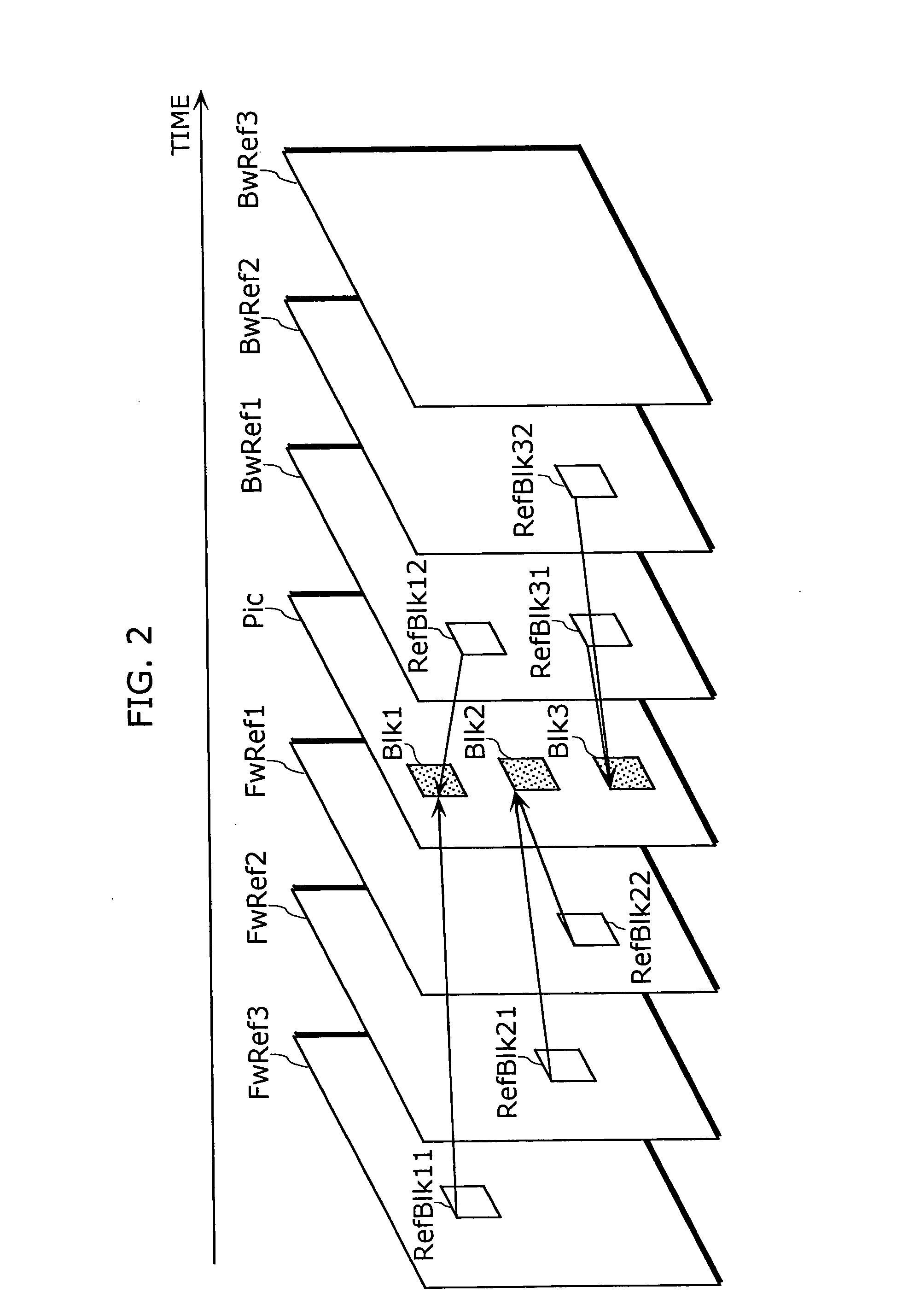Moving picture coding method and a moving picture decoding method
a coding method and a technology for moving pictures, applied in the field of moving picture coding methods and moving picture decoding methods, can solve the problems of degrading coding efficiency, reducing the processing burden caused by motion estimation, and inability to use bidirectional predictive pictures, so as to reduce the processing burden and effective coding
- Summary
- Abstract
- Description
- Claims
- Application Information
AI Technical Summary
Benefits of technology
Problems solved by technology
Method used
Image
Examples
first embodiment
[0062] FIG. 6 is a block diagram showing a structure of a moving picture coding apparatus according to the The same marks are put for the units and the data operating in the same manner as described in the block diagram showing a structure of a conventional moving picture coding apparatus in FIG. 1 and the description will be abbreviated. It is possible for the moving picture coding apparatus and the moving picture decoding apparatus according to each embodiment described below to switch, on a block-by-block basis, between the following prediction methods: a method of generating a predictive image by pixel interpolation using two reference pictures (a plural reference picture interpolation prediction); a method of using a block included in a single arbitrary picture directly as a predictive image; a method of generating a predictive image using an intra-picture prediction.
[0063] The moving picture coding apparatus is an apparatus for dividing an inputted picture data Img into block...
second embodiment
[0079] FIG. 8 is a block diagram showing a moving picture decoding apparatus according to the second embodiment of the present invention. The same marks are put for the units and the data operating in the same manner as illustrated in the block diagram showing a structure of the conventional moving picture decoding apparatus in FIG. 4, and the description will be abbreviated. The difference between the moving picture decoding apparatus of the present embodiment and the conventional one shown in FIG. 4 is that a default reference picture number buffer 402 is added to the former.
[0080] The moving picture decoding apparatus, as shown in FIG. 8, includes a variable length decoding unit 401, a default reference picture number buffer 402, a motion compensation unit 403, a picture decoding unit 404, an adder 405, a pixel interpolation unit 406, a multi-picture buffer 407 and a switch 408.
[0081] The variable length decoding unit 401 performs variable length decoding on the inputted coded mo...
third embodiment
[0087] FIG. 9 is a block diagram showing a moving picture coding apparatus according to the third embodiment of the present invention. The same marks are put for the units and the data operating in the same manner as shown in the block diagram illustrating the moving picture coding apparatus according to the first embodiment in FIG. 6, and the description will be abbreviated.
[0088] The moving picture coding apparatus of the present embodiment includes a default reference picture number generation unit 201 in addition to the structure shown in the first embodiment. The default reference picture number generation unit 201 generates a default reference picture number DefRefNo using a predetermined method and outputs it to the motion estimation unit 101. The motion estimation unit 101 performs motion estimation, by fixing the one of two reference pictures as the reference picture indicated by the inputted default reference picture number DefRefNo, when the plural reference picture inter...
PUM
 Login to View More
Login to View More Abstract
Description
Claims
Application Information
 Login to View More
Login to View More - R&D
- Intellectual Property
- Life Sciences
- Materials
- Tech Scout
- Unparalleled Data Quality
- Higher Quality Content
- 60% Fewer Hallucinations
Browse by: Latest US Patents, China's latest patents, Technical Efficacy Thesaurus, Application Domain, Technology Topic, Popular Technical Reports.
© 2025 PatSnap. All rights reserved.Legal|Privacy policy|Modern Slavery Act Transparency Statement|Sitemap|About US| Contact US: help@patsnap.com



